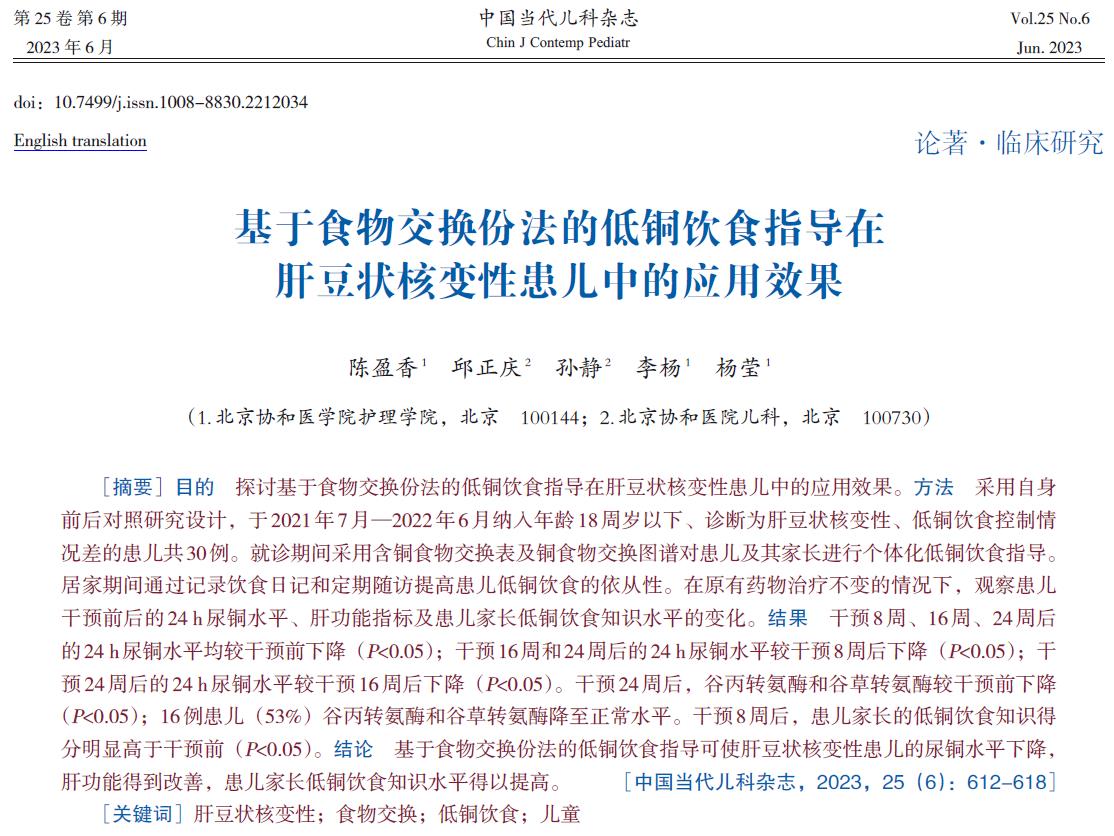 PDF(629 KB)
PDF(629 KB)


Application of a low copper diet guidance based on food exchange portions in children with hepatolenticular degeneration
CHEN Ying-Xiang, QIU Zheng-Qing, SUN Jing, LI Yang, YANG Ying
Chinese Journal of Contemporary Pediatrics ›› 2023, Vol. 25 ›› Issue (6) : 612-618.
 PDF(629 KB)
PDF(629 KB)
 PDF(629 KB)
PDF(629 KB)
Application of a low copper diet guidance based on food exchange portions in children with hepatolenticular degeneration

Hepatolenticular degeneration / Food exchange / Low copper diet / Child